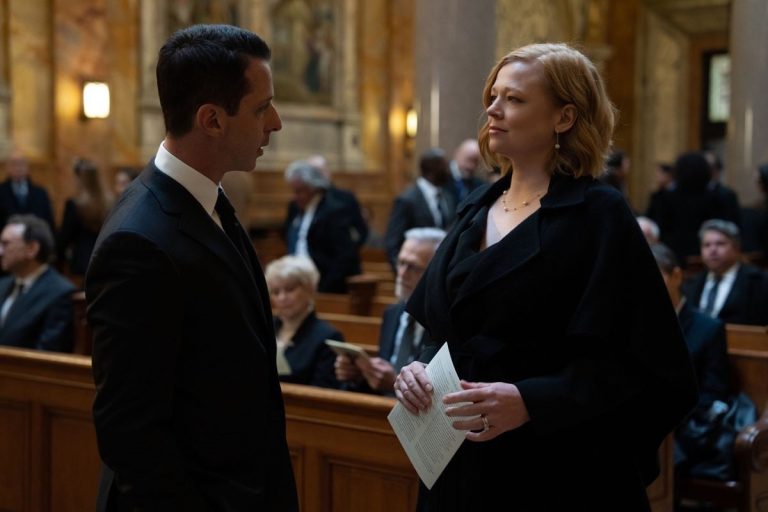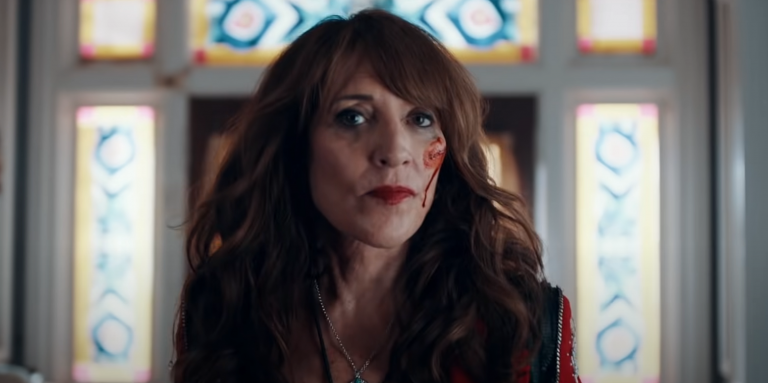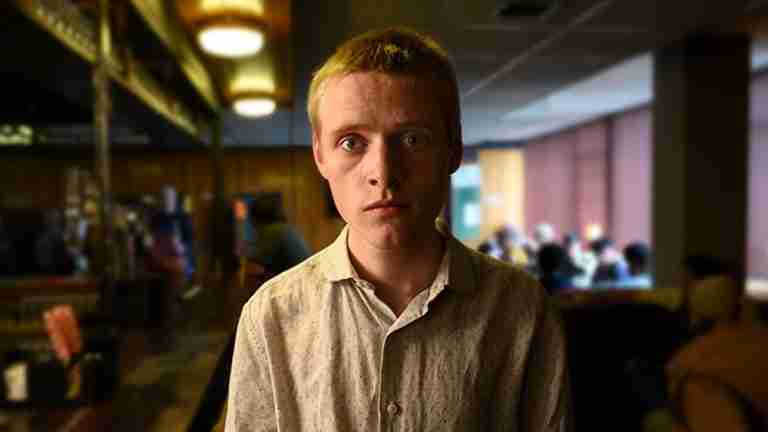Ron Howard’s Apollo 13 (1995) unfolds as a riveting chronicle of one of humanity’s most perilous space missions. What begins as a seemingly routine voyage to the Moon soon spirals into a gripping tale of survival. At first, the journey carries the exhilaration of discovery—a bold leap forward in humankind’s conquest of space. Yet the triumph is short-lived. A sudden oxygen tank explosion cripples the spacecraft, stripping away its systems and leaving the astronauts’ lives hanging by a thread. In an instant, exploration gives way to endurance. Each choice, weighed between risk and hope, becomes a matter of life or death as the crew and Mission Control race against time to guide the astronauts safely back to Earth.
Spoilers Ahead
Apollo 13 (1995) Plot Summary & Movie Synopsis:
Why was Jim Lovell Chosen to Command Apollo 13?
Jim Lovell is introduced not as a man chasing fame, but as a veteran astronaut who has already circled the Moon once on Apollo 8. His assignment to Apollo 13 is framed as destiny, a second chance to fulfill his dream of walking on the lunar surface. Lovell is also a family man. His promise to Marilyn that he will come back is more than reassurance. For him, duty is not just to NASA, but to the people waiting at home. When Ken Mattingly is replaced with Jack Swigert due to the measles scare, Lovell resists. Breaking up his team feels like gambling with lives. Yet he eventually yields because he understands that in spaceflight, protocol saves lives more than personal loyalty. This moment foreshadows Lovell’s later role, balancing the emotional weight of dreams with the cold necessity of survival.
What Causes the Crisis in Space?
Haunted by the stigma of being a last-minute replacement, Swigert carries more than just the weight of his inexperience. When Mission Control orders him to stir the oxygen tanks, the command that precedes disaster, suspicion falls squarely on him. The explosion not only jeopardizes the mission but also taints his standing among the crew. Haise bluntly calls him out for his rookie status, while Swigert himself is consumed by guilt, convinced that Mission Control is concealing their true chances of survival.
Lovell, however, refuses to let their ordeal fracture the team. His leadership is never about barking orders. It’s about maintaining morale. In one of the film’s defining moments, he steps into the escalating exchange with the calm authority of a father breaking up a family quarrel. He steers the crew away from blame and recrimination, redirecting their energy from corrosive suspicion and bitter humor toward constructive survival. For Lovell, true command lies in preserving the humanity that the void of space threatens to strip away.
What Role Does Gene Kranz Play in Saving the Crew?
On Earth, Flight Director Gene Kranz (Ed Harris) embodies the spirit of NASA’s ground teams. His declaration, ‘Failure is not an option,’ is not bravado, but a command to every engineer and technician to treat survival as inevitable, regardless of how impossible it may seem. Kranz’s genius lies not in personal heroics but in his ability to channel the collective intelligence of Mission Control. From shutting down nonessential systems to improvising CO₂ filters with duct tape and cardboard, Kranz ensures every solution is born from collaboration. He is the mirror to Lovell in space, both men leading teams through uncertainty by sheer force of belief.
How Does the Crew Endure the Ordeal?
The conditions inside the Lunar Module Aquarius are brutal. Water is rationed, and there’s the looming threat of suffocation. Haise develops an infection, Swigert remains defensive, and Lovell silently mourns the Moon he will never land on. But together, they improvise, adapt, and persist. When navigation systems fail, Lovell uses the Earth’s horizon as a reference point, proving that human instinct and courage can substitute for computers. Each man’s endurance becomes an act of defiance against the void. They cannot control whether they live or die. But they can control whether they want to give up or not.
Why is Ken Mattingly Critical to Their Survival?
Grounded by the measles scare, Ken Mattingly (Gary Sinise) refuses to accept his sidelining as final. When John Aaron recruits him to help design a power-up sequence for the dormant Command Module, Mattingly channels his frustration into focus. Alone in a simulator, he experiments with every circuit combination until he finds a way to restart Odyssey without draining its fragile batteries. Mattingly’s role is symbolic: though excluded from the mission physically, he becomes essential spiritually. His presence reminds us that spaceflight is never just about the men in orbit, but about the thousands on Earth carrying them home.
What Does the Ending Mean?

The film’s climax hinges on uncertainty: will Odyssey’s heat shield survive re-entry? When the astronauts go radio silent longer than expected, tension peaks. But then their voices crackle through, alive and triumphant. The splashdown is less about victory than relief, a testament to ingenuity, teamwork, and unyielding will. Lovell’s final voice-over places the mission in perspective. The dream of walking on the Moon is gone. However, something greater has been achieved: survival against odds that should have meant death. His reflection, wondering when humankind will return to the Moon, reminds us that exploration is never just about goals, but about the resilience built along the way.
Apollo 13 (1995) Movie Ending Explained:
Was Apollo 13 A Success or Failure?
Three days into the mission, Jack Swigert shook the liquid oxygen tanks as instructed by Mission Control. An electrical short caused a catastrophic explosion that damaged the spacecraft, venting millions of gallons of oxygen into space and disabling critical fuel cells. As the power continued to drain, Jim Lovell and Fred Haise had to abandon their hopes of walking on the Moon. They moved with Swigert to the Lunar Module Aquarius, which passed for an emergency lifeboat. The mission went from exploring the surface of the Moon to surviving. The botched landing on the Moon crushed Lovell. He had already orbited the Moon during Apollo 8 and had aspired to leave his footprints on the lunar surface.
As the disabled spacecraft drifted by the Moon, Lovell looked down at the surface that he would never touch. This moment is devastating in its stillness, the loss of a dream in exchange for the remote hope of survival. His leadership to that point was steadfast, and he kept the crew cohesive and rational, doing everything possible to prevent panic from overtaking rationality.
From Earth, Flight Director Gene Kranz epitomized NASA’s resolve with his famous quote, ‘Failure is not an option.’ Engineers devised fixes immediately. They fashioned makeshift carbon dioxide scrubbers with duct tape and spare parts, conserving every watt of electricity and relying on hand-flying with Earth as their reference frame. Meanwhile, down on the ground, astronaut Ken Mattingly worked through endless simulation trials to create a sequence to safely energize the Command Module and not overwhelm its fragile batteries.
When the Odyssey splashed down, it was not the ‘Moon landing’ America had expected. But in many ways, it was much more important. Apollo 13 demonstrated that human ingenuity could turn an absolute disaster into a successful survival. It proved the spirit of both astronauts and ground teams. It showed that even though spaceflight is about the men in space, it is also about the thousands of minds working together to reach the goal. For humankind, Apollo 13 had a lesson about exploration: it is a much closer twin to failure than to success.
The mission did provide science with incredibly valuable knowledge about spacecraft failures, crisis management, and collaboration under pressure. For NASA, it reinforced that preparation and planning are not the absence of risk; it is being ready to respond when you have risk. The astronauts did not conquer the Moon, but they conquered the void. Humanity learned that survival itself, against impossible odds, can sometimes be the greater victory.






